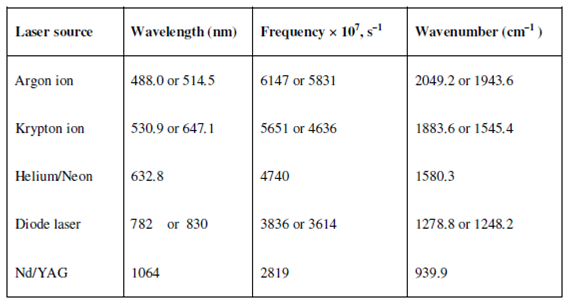Radiation Sources for Raman Spectroscopy:
The first ever Raman instrument was constructed in the year of 1928 that used the Sun light focused through a telescope to achieve a high enough intensity in the scattered signals. The spectrometers that followed used mercury arc lamps as a light source. With the advent of lasers along with highly desirable properties of high intensity, single wavelength and coherence, the modern spectrometers almost exclusively use laser sources. The generally used lasers and their features are compiled in Table.
Table: Commonly used lasers sources in Raman spectroscopy and their characteristics

The intensity of Raman scattering is dependent on the fourth power of the frequency of the exciting radiation, besides concentration and other factors. Thus, the argon and krypton ion laser sources are more intense than the other lasers being used at the similar power and accordingly provide better spectra. Instead the low frequency lasers i.e., diode laser and Nd/YAG laser could be used at higher power and also have an added benefits that these do not produce the interfering fluorescence spectral lines.
There is a requirement for several more new sources which will give still better spectra and the way technology is developing we could hope to get them soon.